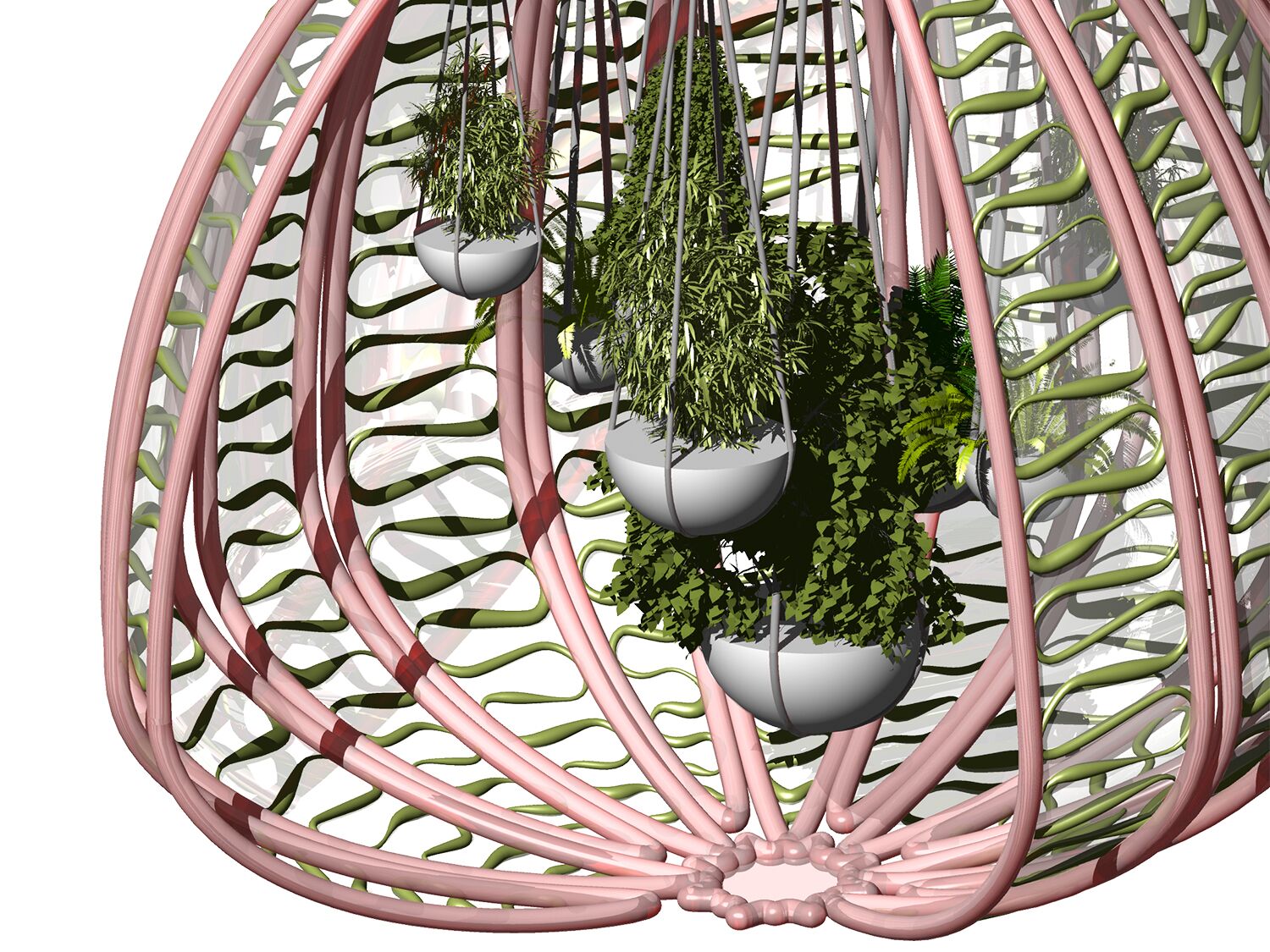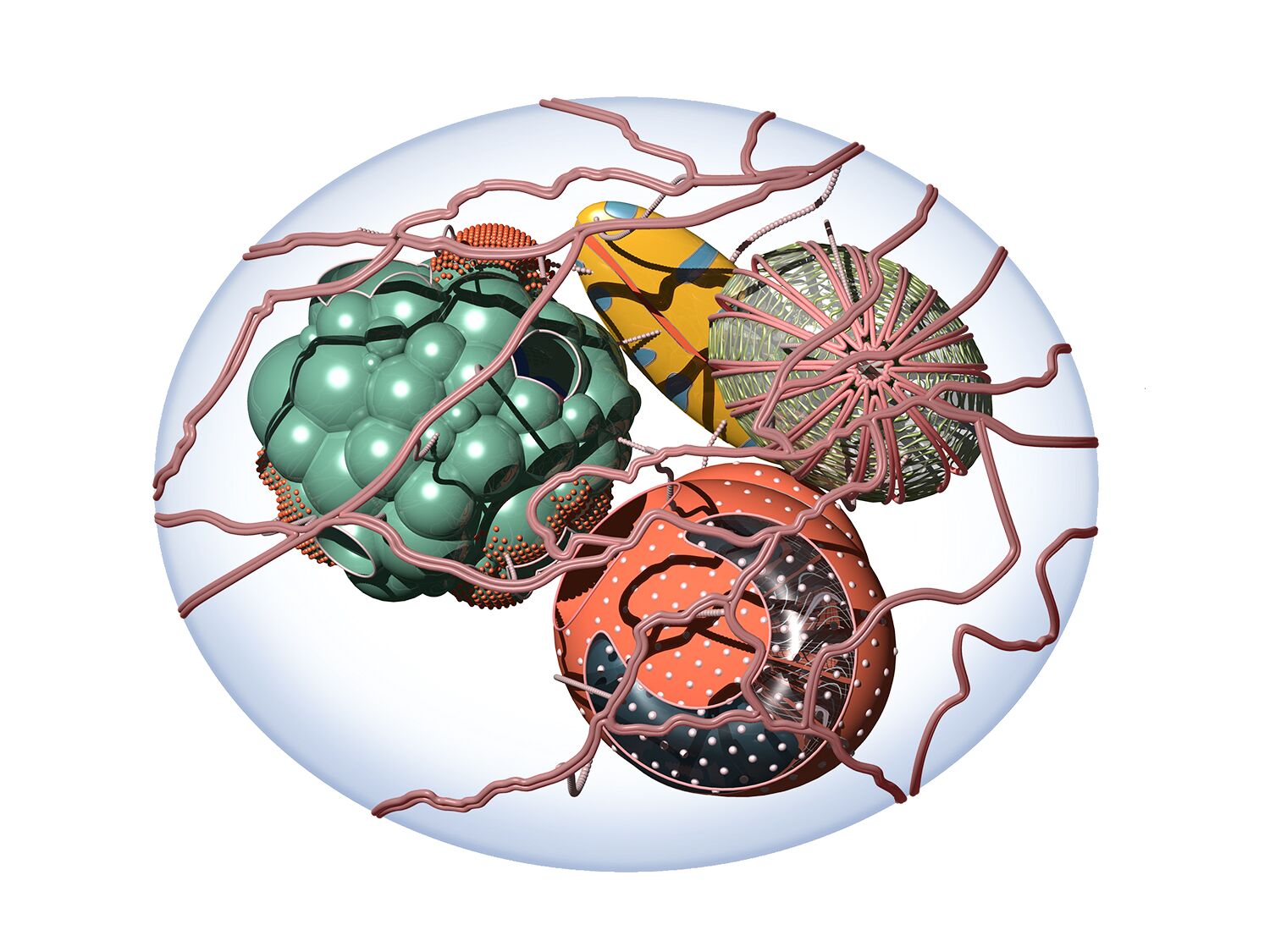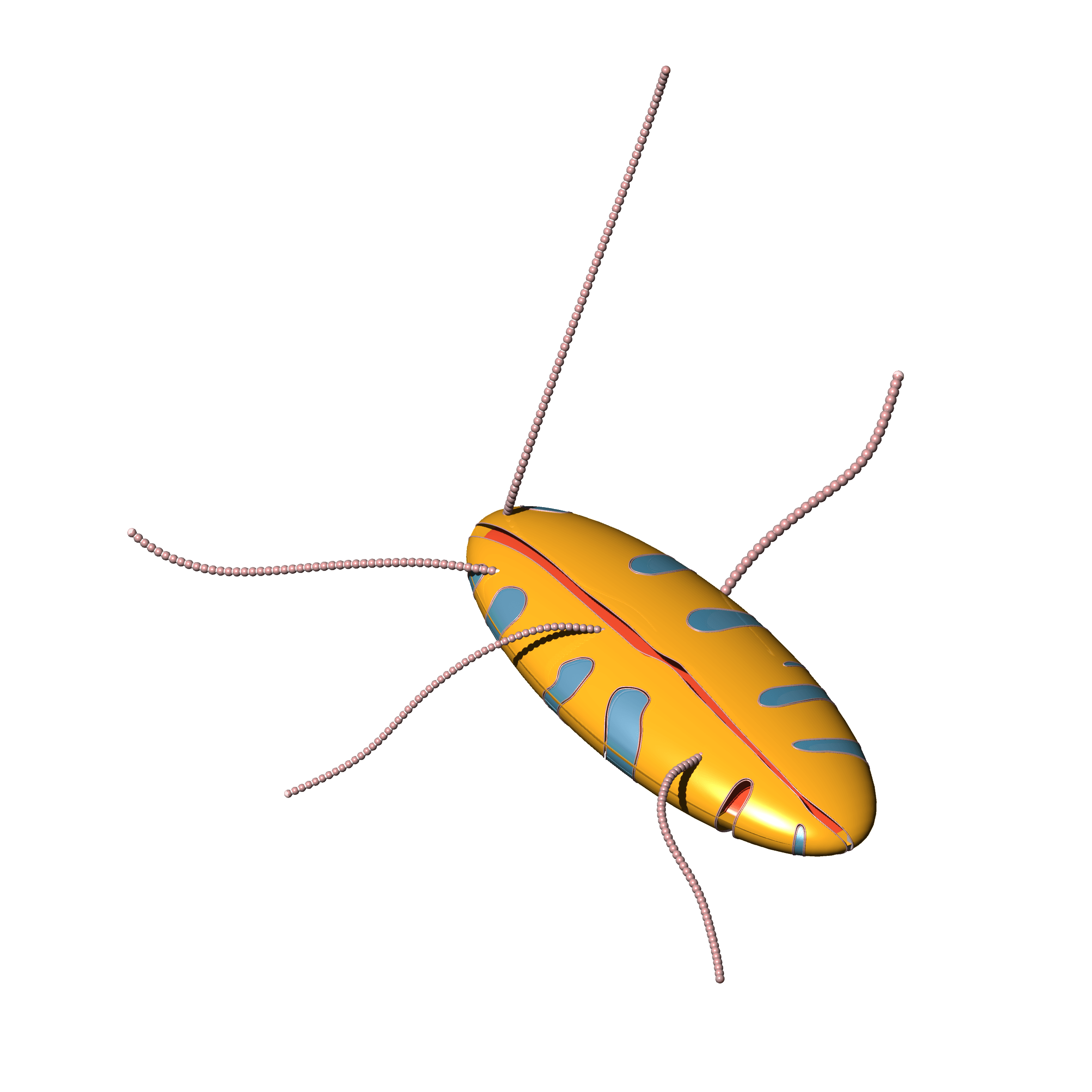This story is part of Next Generation, a series in which we give young makers a platform to showcase their work. Your work here? Get in touch and plot your coordinates as we navigate our future together.
Continuing our Next Generation series is Amelie Unger, a recent design graduate who draws design solutions from nature's untapped potential. Unger is a recent MA Interior Architecture graduate from the Piet Zwart Institute in Rotterdam. Her fascinating perspective calls for a new approach to building in landscapes affected by desertification: living architecture that transforms with the climate.
Unger's No Solid Ground is a speculative research project that responds to an urgent need for sustainable, habitable structures in desolate and constantly shifting desert regions. Unger moves beyond anthropocentric architectural methods that attempt to override or contain nature. Instead, she incorporates the adaptive capabilities of animals and plants to create architecture that responds to nature without trying to resist it.
Her research is visualized as a series of cell-like pods that would provide for the needs of humans whilst supporting the surrounding ecosystem. Unger’s ecologically inspired concepts represent a promising shift in approach to climate change: self-adaptive, non-static structures that bring technology and nature together in mutually beneficial ways.
We caught up with Amelie to find out more about No Solid Ground.
What Inspired this project and why did you choose to focus on the problem of desertification?
The project was inspired by a trip to the German North Sea island, Sylt. This island is one of many great examples of how nature has been adjusting and reshaping the environment over time. Through erosion, Sylt went from being part of the mainland to becoming an independent island.
Lately, the human impact on Earth is transforming landscapes through desertification and rising sea water so drastically that we will have to rethink the way we are building. The current architecture is based on the belief that buildings will stay in the same place for 50-70 years, but it will not function on a ground which is slowly turning into a desert or sea.
I believe that we can solve this problem if we use nature’s design and start to understand and embrace a flexible kind of architecture which is able to shift with its surroundings.
Since there is already great development when it comes to building with rising sea levels, I decided to focus on flexible living structures in arid regions to start a conversation about how we can continue offering livable space in times of desertification.

What adaptive possibilities does your project draw on?
We are not the only ones that have to adapt to changing environments. Plants and animals had millions of years of experience in this field. Compared to this, the human experience in adaption is just a spec of dust.
Drawing from this thought, I designed all of the pods with different functions in mind which came from animals and plants’ abilities to adapt to their surroundings. I used the skills of algae plants to purify the air and turn CO2 molecules into reusable biomass. The colorful sea slug, Chromodoris roboi, became the inspiration to create a hide-away which scares away predators while the ability of the so-called ‘glass frog’ - which can change its appearance from transparent to solid - inspired the exterior membrane of my project. All of these designs draw from nature to create weird looking living organisms, able to stay alive in the hostile environment of the desert.
"I see these spaces as an opportunity to start a conversation about how we can provide safe living spaces in arid regions in the future. "

How do you imagine these spaces being used, and what problems would they solve?
By building flexible housing structures in the desert, we could break the cycle of climate refugees: right now, most people living in bigger cities close to the coast. These are already endangered by rising sea levels. In arid regions, desertification will force people out of their homes and on the move to find a new place in these already in these already overcrowded and endangered cities by the sea.
I see these spaces as an opportunity to start a conversation about how we can provide safe living spaces in arid regions in the future. I also imagine them as actual living spaces that would allow people to remain in these regions instead of displacing whole populations.
The design of the pods could also be adapted to house public buildings and indoor crop farms, creating whole villages

Do you see your work as a form of biomimicry?
I definitely see my work as a form of biomimicry. I look at nature as the first designer on this earth, and I believe that we need to adjust to it instead of nature adjusting to us. Nature’s ability to move sand dunes is so complex that we still can’t completely grasp the way it works. How are we supposed to to build something that would stand against this sheer force we don’t understand? I am suggesting that we need to adapt if we want to continue living in these areas. The exterior of my project is supposed to become one with nature by moving within the architecture of the sand dune while the interior mimics the behavior of organisms which have successfully adapted to their hostile environment.
"I look at nature as the first designer on this earth, and I believe that we need to adjust to it instead of nature adjusting to us. "
How do you think biomimicry can transform our relationship with the environment?
Maybe biomimicry is our chance to finally make peace with nature, we would not fight against it anymore, but instead work with it. I can imagine that there lies a lot of untapped potential within this approach to building and designing.
Do you see your work as a Utopian project or a science fiction-fueled geoengineering nightmare?
I hope that people see my project as a Utopian project, but I think right now it is more of a a fiction-fueled geoengineering nightmare to them. The design is supposed to not resemble the way we are building today to create a clear departure from contemporary architecture, but it is designed to offer all of the necessities we know from our current homes. So I imagine it as a quite comfortable Utopian living scenario.
"Today’s designers play a huge role in finding creative solutions to complex problems. "
Why is it important to create speculative designs and visualizations that address wider issues?
I think it is good to let your imagination run free before putting boundaries on what you can and can not do as a designer. How to make a project work should not hinder you from making the project. Today’s designers play a huge role in finding creative solutions to complex problems. Speculative design and visualization are great ways to approach wider issues from a more playful and free point of view.
"Maybe biomimicry is our chance to finally make peace with nature, we would not fight against it anymore, but instead work with it. "
How did you present your project? How did audiences engage with it?
To make this project tangible for the audience during the exhibition, I built a table with all of the information printed on it. Instead of just reading and looking at the images, people were able to engage with the table by moving magnifying domes over the tabletop. They looked at my project the same way I used to look at all of the organisms which inspired my design. For me, this was a great way to start conversations with people from a range of backgrounds. The most memorable visitor was a biologist who understood all of the inspiration, but said he had never thought of nature’s designs as being useful for humans too.
Is speculative design a field you hope to continue in? What’s next for you?
I definitely hope to continue in this field. I see my living cell as my entry into the field, and will continue working on the topic of building in times of climate change since it is very important to me. Currently, I am working on different essays regarding this topic, and I will continue to follow this direction.
And one for the road: what other projects or designers inspire you right now?
The works of photographer Tom Hegen inspire me a lot right now, especially his ‘Greenhouse’ series, which shine a light on the practice of growing crops with the use of LED light in the Netherlands. Also the works of my friends Gill Baldwin and Carlijn Olde Beverborg are very inspiring to me; they question how we are living in times where machines take a constant place in our homes and everyday lives.

Share your thoughts and join the technology debate!
Be the first to comment